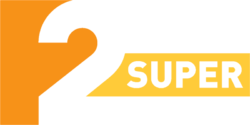
Television in Hungary was introduced in 1957. Transmission in colour was introduced to Hungarian television for the first time in 1971. Hungary had only one television channel until 1973. It was only in the mid 1990s when private and commercial broadcasting was introduced to Hungary.
Contents
- Free-to-air television channels broadcasting in Hungary
- Free-to-air on DVB-T
- Free-to-air on analogue
- Free-to-air on satellite
- Hungarian channels by groups
- Duna Média (MTVA)
- RTL Magyarország (RTL Group)
- TV2 Group
- National Channels
- National commercial channels
- National commercial premium channels
- Cable channels
- General and entertainment
- News and politics
- Sport
- Movies
- Series and telenovelas
- Documentary
- Animals
- Travel and lifestyle
- Culinary
- Children & families
- Music
- Religion
- Regional
- Adult
- HD TV-Channels
- Defunct or renamed
- Most viewed channels
- Historical rankings
- See also
- References


















